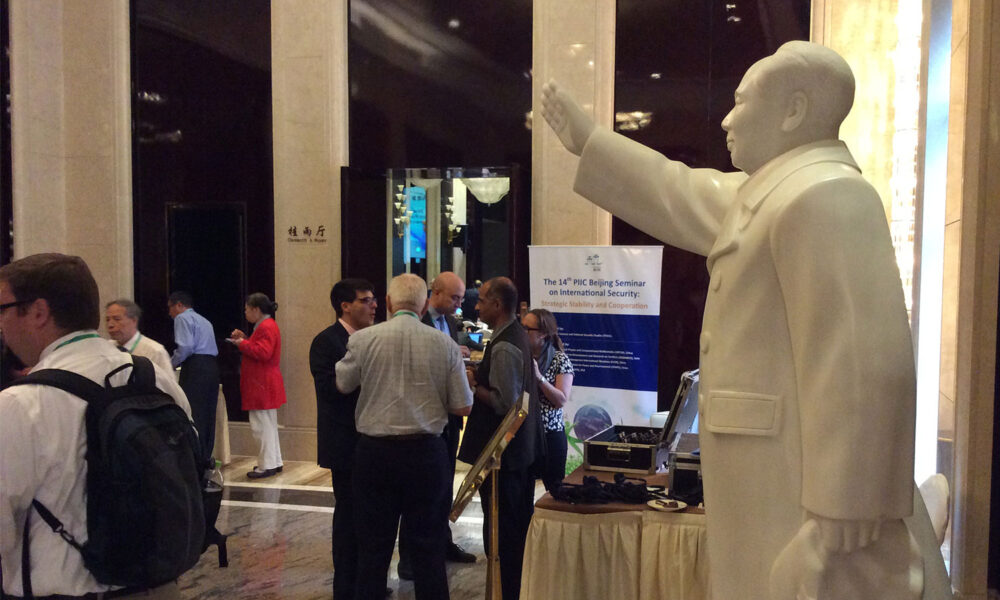Nineteen years ago, while attending my first arms control conference in China, I heard the central question in US-China nuclear relations for the first time. The Chinese put it simply.
Is the United States going to treat China like a small Russia or a large North Korea?
The United States respected Russian nuclear forces. It did not respect North Korea’s. If war came, the United States could wipe out North Korea’s nuclear weapons in a first strike, and even if it missed a few, the retaliatory damage could be limited to a tolerable degree. Not the case with Russia. Its arsenal was too big.
China’s nuclear force was somewhere in the middle, much bigger than North Korea’s but nowhere near the size of Russia’s. So, the Chinese were asking their US counterparts, can you live with being vulnerable to an intolerable level of Chinese nuclear retaliation?
The US participants grumbled, and ignored the question, which, from the looks on their faces, they had heard many times before. They wanted to talk about “transparency.” How many nuclear weapons will China build? How many is enough?
The Chinese, quite understandably, said they could not answer that question until the United States answered theirs.
In one form or another, that same unsatisfying conversation has been going on for nearly twenty years. US officials can’t live with the idea the United States is vulnerable to Chinese nuclear retaliation, or, if they can, they won’t admit it, and don’t want to talk about it. The Chinese don’t know how many nuclear weapons are enough to convince the United States government to treat China like a small Russia. And since US officials don’t want to talk about it, the Chinese are forced to guess.
Until recently, it didn’t matter. The chance the United States and China would go to war was small, and if they did, the probability of nuclear use was next to zero. That’s not true anymore.
US-China relations are back to where they were before Nixon went to China. The United States government no longer accepts China’s claim to sovereignty over Taiwan, which is the only dispute likely to lead to war. Voices for independence on the island are growing louder. Beijing and Taipei aren’t talking to each other. US officials are visiting the island for the first time since the normalization of diplomatic relations in 1979. PRC leaders may feel, as their most seasoned arms control diplomat once put it, like a “cornered dog.”
US war planners are no longer confident they could win a conventional conflict over Taiwan. Some US defense experts think they can get away with using low-yield nuclear weapons to tip the scales back in favor of the United States without risking Chinese nuclear retaliation. They know China doesn’t have similar low-yield options and believe Chinese leaders might not risk retaliating with higher yield weapons because they do not have enough to fight a nuclear war with the United States. The Pentagon put new lower-yield nuclear warheads on some submarine based ballistic missiles and is developing a new submarine-launched nuclear-armed cruise missile with a variable yield warhead. It also continues to develop conventional means to knock out China’s nuclear missiles at the beginning of a war.
From China’s point of view, the United States still treats China like a big North Korea. Chinese arms controllers have been warning their US counterparts for twenty years that if the United States government does not accept vulnerability to Chinese nuclear retaliation, just as China accepts vulnerability to US nuclear retaliation, sooner or later China’s leaders would take steps to put the question beyond doubt. China’s new silo fields are a great leap in that direction.
Whether this nuclear stratagem will work is a question better left to psychologists. If we take Chinese leaders at their word, the only reason they have nuclear weapons is to cope with the fear of a nuclear attack. But there are wiser ways to deal with fear. Instead of wanting to be a little Russia, Chinese leaders might aspire to the example set by South Africa and give up their nuclear weapons. How could the United States launch a nuclear attack against China after it voluntarily disarmed? Displaying that kind of courage, instead of cowering inside silos in the desert, might make China the global leader it apparently aspires to be.
How the United States should respond to China’s disappointing decision is the subject of the next post in this series.

